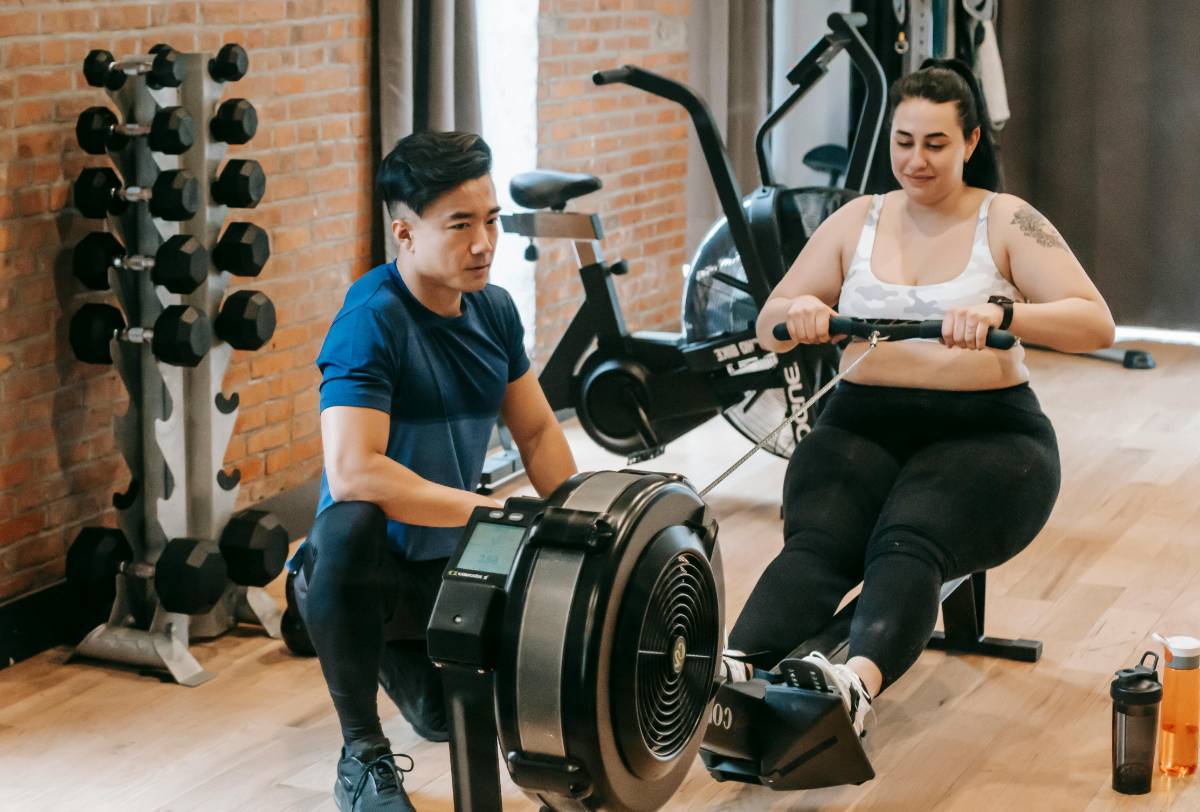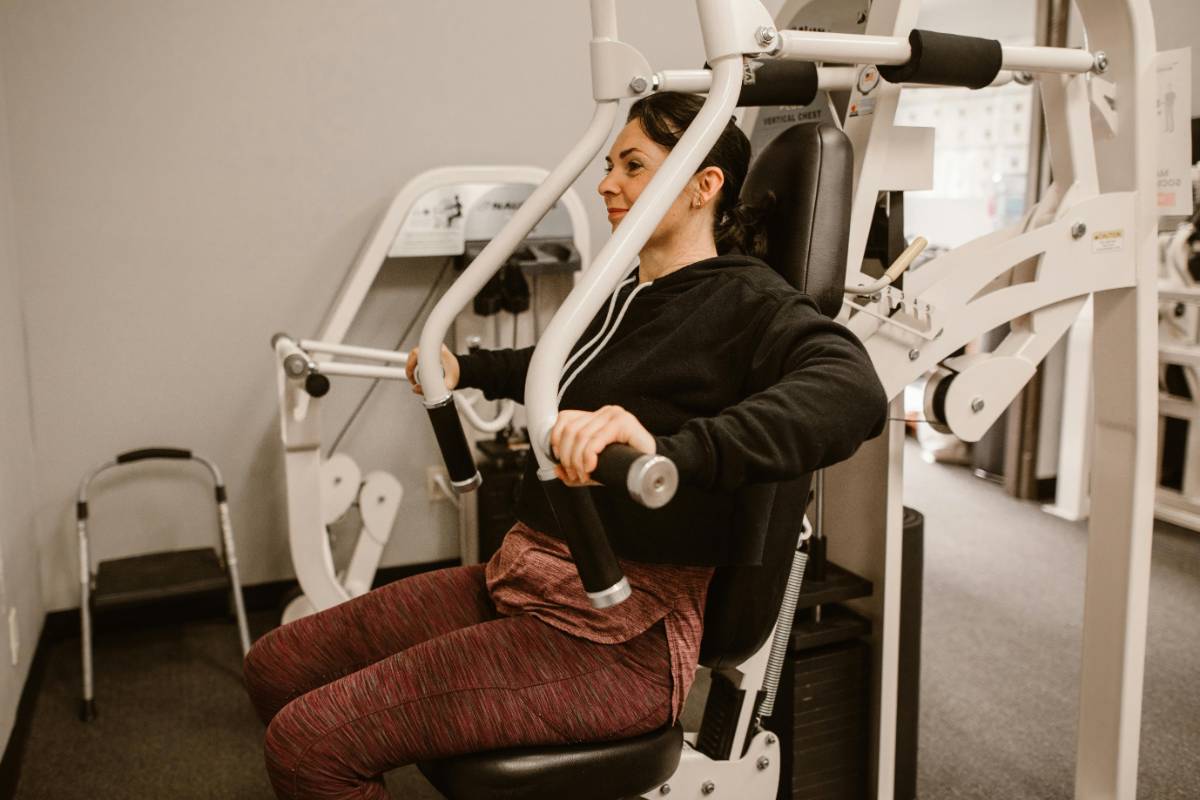Sample Weekly Workout Routines for Different Fitness Goals

5 min read
|10 Dec 2025Creating a workout routine tailored to your fitness goals is essential for achieving success. Whether your aim is to build muscle, lose weight, or improve overall fitness, having a structured plan can help you stay focused and motivated. Here are sample weekly workout routines for various fitness goals to guide you in designing your personalized plan.
1. Building Muscle
If your primary goal is muscle growth, your workout routine should emphasize strength training with a focus on progressive overload. Here’s a sample weekly routine:
Monday: Chest and Triceps
Bench Press - 4 sets of 8-12 reps
Incline Dumbbell Press - 3 sets of 10-12 reps
Tricep Dips - 3 sets of 8-12 reps
Cable Flyes - 3 sets of 12-15 reps
Tuesday: Back and Biceps
Pull-Ups - 4 sets of 8-12 reps
Bent-Over Rows - 3 sets of 8-12 reps
Barbell Curls - 3 sets of 10-12 reps
Hammer Curls - 3 sets of 12-15 reps
Wednesday: Rest or Active Recovery
Thursday: Legs
Squats - 4 sets of 8-12 reps
Leg Press - 3 sets of 10-12 reps
Leg Curls - 3 sets of 12-15 reps
Calf Raises - 3 sets of 15-20 reps
Friday: Shoulders and Abs
Overhead Press - 4 sets of 8-12 reps
Lateral Raises - 3 sets of 12-15 reps
Front Raises - 3 sets of 12-15 reps
Planks - 3 sets of 60 seconds
Saturday: Rest or Active Recovery
Sunday: Full-Body Workout
Deadlifts - 4 sets of 8-12 reps
Push-Ups - 3 sets of 15-20 reps
Dumbbell Rows - 3 sets of 10-12 reps
Bodyweight Squats - 3 sets of 20 reps
2. Weight Loss
A weight loss-focused workout routine should combine cardio and strength training to maximize calorie burn and boost metabolism. Here’s a sample routine:
Monday: HIIT Cardio
30 minutes of high-intensity interval training (e.g., sprints, burpees, mountain climbers)
Tuesday: Full-Body Strength Training
Circuit of Bodyweight Squats, Push-Ups, Lunges, and Planks - 3 circuits of 15 reps each
Wednesday: Rest or Light Activity
Gentle yoga or stretching
Thursday: Cardio
45 minutes of moderate-intensity cardio (e.g., jogging, cycling)
Friday: Strength Training
Focus on upper body exercises like Dumbbell Presses, Rows, and Tricep Dips - 3 sets of 12 reps each
Saturday: Cardio
30 minutes of interval training (e.g., alternating between fast and slow walking)
Sunday: Rest or Active Recovery
Walking or light stretching
3. Improving Overall Fitness
For general fitness, a balanced routine that includes cardio, strength training, and flexibility exercises will help you achieve well-rounded results. Here’s a sample routine:
Monday: Cardio and Core
30 minutes of cardio (e.g., running, cycling)
Core exercises like Crunches, Russian Twists, and Leg Raises - 3 sets of 15 reps each
Tuesday: Full-Body Strength Training
Exercises like Squats, Bench Press, and Deadlifts - 3 sets of 12 reps each
Wednesday: Flexibility and Mobility
45 minutes of yoga or stretching
Thursday: Cardio
45 minutes of moderate-intensity cardio (e.g., swimming, brisk walking)
Friday: Strength Training (Focus on Different Muscle Groups)
Exercises like Pull-Ups, Dumbbell Press, and Lunges - 3 sets of 12 reps each
Saturday: Cardio and Core
30 minutes of cardio (e.g., interval sprints)
Core exercises like Planks, Side Planks, and Bicycle Crunches - 3 sets of 30 seconds each
Sunday: Rest or Light Activity
Relaxing walk or gentle stretching
4. Enhancing Flexibility
A routine focused on improving flexibility should incorporate regular stretching and mobility work. Here’s a sample routine:
Monday: Dynamic Stretching
15 minutes of dynamic stretches (e.g., leg swings, arm circles)
Tuesday: Yoga
45 minutes of a yoga routine focusing on flexibility and balance
Wednesday: Rest or Light Activity
Gentle walking or light stretching
Thursday: Static Stretching
30 minutes of static stretches targeting major muscle groups
Friday: Yoga
45 minutes of yoga with an emphasis on deep stretching
Saturday: Flexibility Routine
30 minutes of flexibility exercises (e.g., hamstring stretches, hip openers)
Sunday: Rest or Gentle Activity
Light stretching or a relaxing walk
By tailoring your workout routine to your specific fitness goals, you can create a plan that maximizes your results and keeps you motivated. Customize these sample routines based on your preferences and fitness level to achieve the best outcomes for your personal goals.
MORE ARTICLES

4 min read | 21 Sep 2025
How to Create an Effective Skincare Routine
Creating an effective skincare routine is essential for maintaining healthy, glowing skin. With countless products and advice available, it can be overwhelming to know where to start. An effective skincare routine is not about using the most expensive products but about selecting the right ones for your skin type and concerns and applying them consistently. In this article, we’ll guide you through the steps to develop a skincare routine that works for you.

4 min read | 20 Sep 2025
Choosing the Right Moisturizer for Your Skin Type
Selecting the right moisturizer can make a significant difference in your skincare routine, as it helps keep your skin hydrated, balanced, and healthy. However, with the myriad of options available, choosing the right one for your specific skin type can be overwhelming. In this article, we’ll guide you through how to select the best moisturizer tailored to your skin type, ensuring that you achieve optimal results.

4 min read | 19 Sep 2025
Benefits of Using Sunscreen Daily
Sunscreen is often considered an essential part of any skincare routine, yet many people overlook its importance. Applying sunscreen daily goes beyond just protecting your skin from sunburns; it helps in preventing long-term damage and maintaining skin health. In this article, we'll explore the numerous benefits of using sunscreen every day and why it's crucial for your skin's overall well-being. Sunscreen is not just a summer product but an all-year-round necessity. Regardless of the season, your skin is exposed to UV rays, which can have harmful effects even on cloudy days.

2 min read | 18 Dec 2025
The Benefits of Strength Training for Weight Loss
Strength training, also known as resistance training, offers numerous benefits for weight loss and overall fitness. Incorporating strength training into your exercise routine can enhance your weight management efforts by boosting metabolism, preserving muscle mass, and improving body composition. Here’s a guide to understanding the benefits of strength training for weight loss and how to make it an effective part of your fitness plan.

3 min read | 17 Dec 2025
Tips for Maintaining Weight Loss After Reaching Your Goal
Achieving your weight loss goal is a significant accomplishment, but maintaining your new weight can be just as challenging. Once you’ve reached your target weight, it’s important to adopt strategies to ensure you keep the weight off and continue to live a healthy lifestyle. Here are some tips for maintaining weight loss after reaching your goal.

5 min read | 16 Dec 2025
How to Read Nutrition Labels to Support Your Weight Loss Goals
Reading nutrition labels is an essential skill for managing your weight and making informed dietary choices. Nutrition labels provide valuable information about the nutrient content of food products, helping you to select options that align with your weight loss goals. Here’s a guide on how to read nutrition labels effectively to support your weight management efforts.
RECENT POSTS
1
How to Transition to a Whole Foods Diet
4 min read | 09 Oct 20252
Benefits of Eating Whole Foods for Your Health
5 min read | 08 Oct 20253
Whole Grains vs. Refined Grains: What’s the Difference?
5 min read | 07 Oct 20254
Incorporating More Fruits and Vegetables into Your Diet
2 min read | 06 Oct 20255
What Are Whole Foods and Why Are They Important?
4 min read | 05 Oct 20256
The Impact of Portion Control on Digestive Health
5 min read | 04 Oct 2025MORE POSTS

Creating a Workout Routine for Weight Loss and Toning
4 min read | 17 Dec 2025
Strength Training vs. Cardio: Finding the Right Balance
2 min read | 16 Dec 2025
How to Incorporate Stretching into Your Workout Routine
3 min read | 15 Dec 2025
Yoga Routines for Flexibility and Stress Relief
4 min read | 14 Dec 2025
The Best Cardio Workouts to Improve Your Endurance
3 min read | 13 Dec 2025
